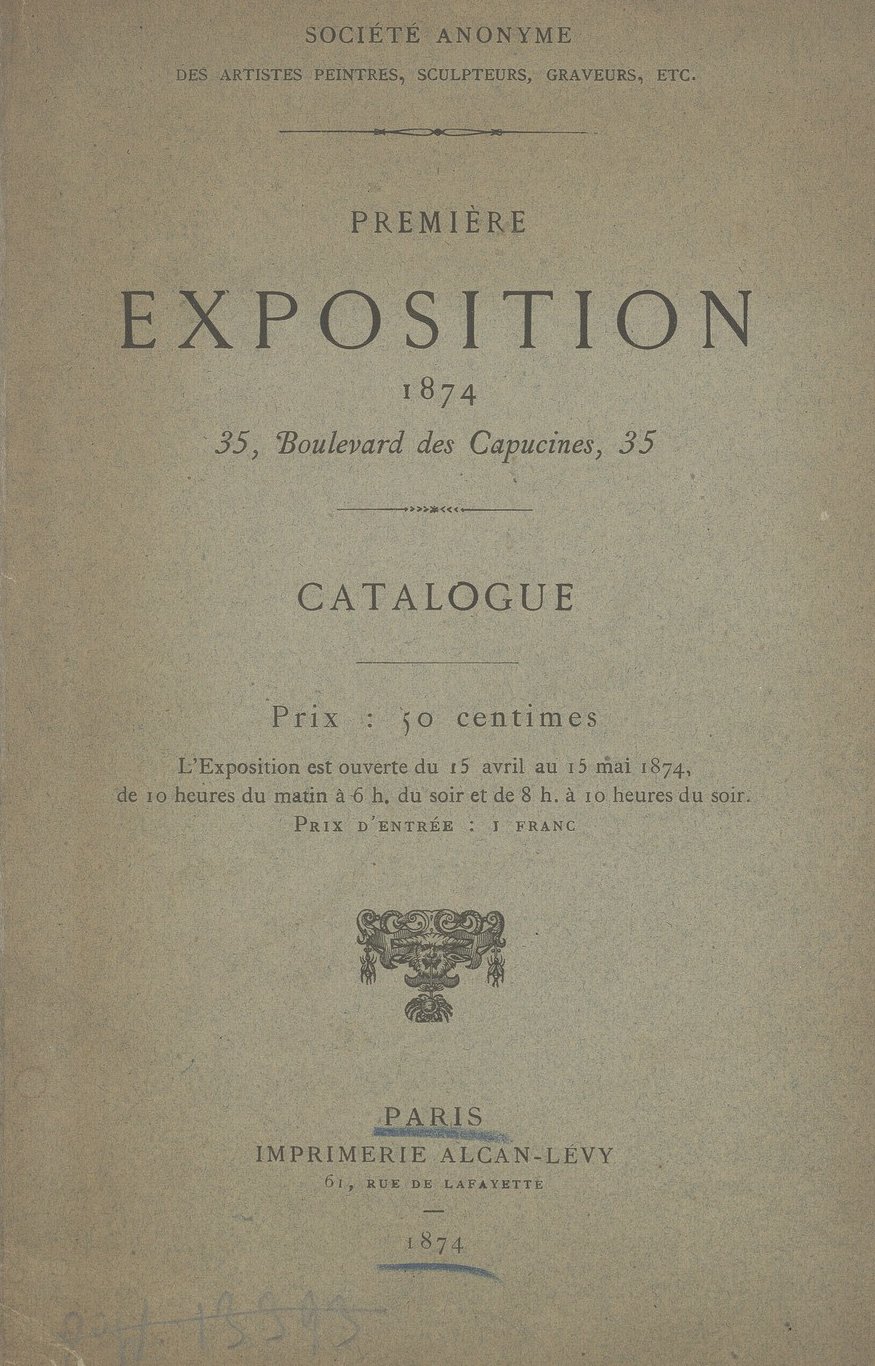150TH ANNIVERSARY OF IMPRESSIONISM

Cover of the catalogue for the First Impressionist Exhibition (Société anonyme des artistes peintres, sculpteurs, graveurs, etc.: Paris: 1874)
On April 15, 1874, a group of determined artists, known collectively as the Société anonyme des artistes peintres, sculpteurs, graveurs, etc. (Joint Stock Company of Artists Painters, Sculptors, Engravers, etc.), commenced the Première exposition of the Société anonyme (First Exhibition of the Joint Stock Company) on the second floor of 35 Boulevard des Capucines in Paris, France. The event would soon come to be known as the First Impressionist Exhibition following a review by the art critic Louis Leroy. In his piece, Leroy satirically coined the group of exhibiting artists “Impressionists” (inspired by Monet’s famous painting, Impression, Sunrise (1872), which was on view): “Impression I was certain of it,” wrote the critic, from the perspective of a fictional viewer of Monet’s work. “I was just telling myself that, since I was impressed, there had to be some impression in it…”
The group, whose early members included Edgar Degas, Claude Monet, Pierre-Auguste Renoir, Camille Pissarro, and Berthe Morisot, emerged in response to the perceived exclusivity of the longstanding Paris Salon. In nineteenth-century France, the annual Salon offered artists a vital opportunity to show their work publicly. Acceptance to this exhibition resembled an official stamp of approval that ensured access to buyers as well as critics whose writings would encourage sales and commissions. In the decades proceeding the 1874 exhibition, however, artists had become increasingly frustrated with the Salon jury’s decisions about artist selections and rejections. The Salon of 1863, for instance, was so controversial that the jury organized a separate, elective Salon called the Salon des Refusés (Salon of the Refused) where artists could exhibit their rejected artworks. Another similar Salon was held in 1873, but thereafter it was the Impressionist Exhibitions that took on the role of offering artists an “alternative” to the Salon.
The aim of the group’s first exhibition was not to display a collective, consistent style, but rather to showcase the variety of work produced by participating artists. In addition to members of the core group, Degas invited certain of his artist-friends such as Ludovic Lepic, Giuseppe De Nittis, and Henri Rouart to display their work.
The exhibition was not the success its organizers had hoped it would be. Expenses outweighed revenues, and attendance was low compared to the Salon. Yet the group persisted, hosting seven more Impressionist Exhibitions in the years to come: in 1876, 1877, 1879, 1880, 1881, 1882, and 1886. Degas participated in all but one (only sitting out the Seventh Impressionist Exhibition in 1882). Despite its disappointing reception, one lasting legacy from the first exhibition came just ten days after its opening, with Louis Leroy’s abovementioned review titled “The Exhibition of the Impressionists.” Little did the skeptical critic know how important the term would become to nineteenth-century France, inspiring modern movements focused on contemporary life and the instantaneity of perception, as well as music and literature, that are still appreciated today.
